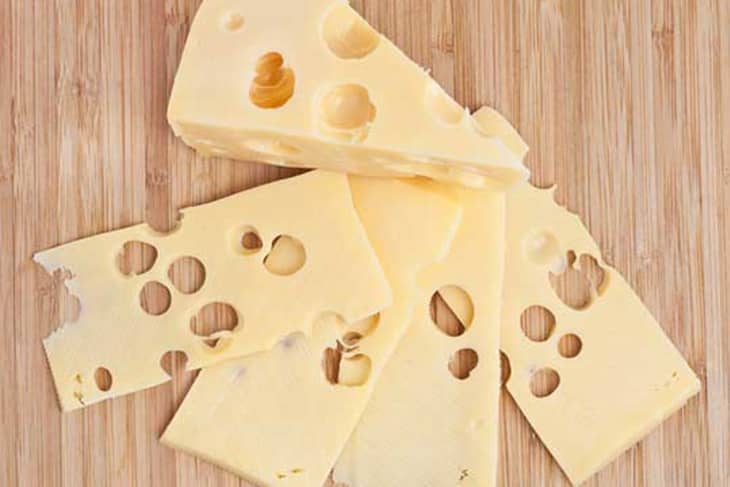Why Does Cheese Have Holes?
You don’t think much about it, probably because you just accept it as a fact: Some cheeses have holes. But why? Cue cheese science.
Ask Miss Muffet. Cheese is made up of curds. Whey — that liquidy, non-fat, non-curd component of milk, is the other by-product of cheesemaking, drained off and dumped. The curds, in contrast — that is, the protein and fatty solids in milk — join together and turn into cheese.
But how does this happen? It’s a starter culture that acidifies milk, breaking it into its solid and liquid parts. Starter cultures contain bacteria that, once added to the vat, will consume lactic acid (a byproduct of the lactose in the milk) and, most significantly, exude bubbles of carbon dioxide gas. These gas bubbles will turn slowly into varying-sized air pockets that become trapped within the rind of a cheese. When cut into, these holes appear in the form of “eyes.” Technical cheese term, indeed.
Think of how sparkling wines go through a secondary fermentation in the bottle, when extra sugar added at the end of winemaking initiates a connversion of sugar into carbon dioxide, only to be revealed in the form of bubbles, and only when the bottle is popped.
It all kind of makes me think about the “if a tree falls in a forest, does it make any sound?” conundrum. Truly, if we were never to cut into a huge wheel of Swiss or pop a bottle of Cava, would we really know if holes or bubbles existed within? Cheese and wine musings.
Nora Singley used to be a cheesemonger and the Director of Education at Murray’s Cheese Shop. Until recently she was a TV Chef on The Martha Stewart Show. She is currently a freelance food stylist and recipe developer in New York.
Related: The Cheesemonger: That Hole in Your Cheese
(Image: Ryzhkov Alexandr via Shutterstock)
